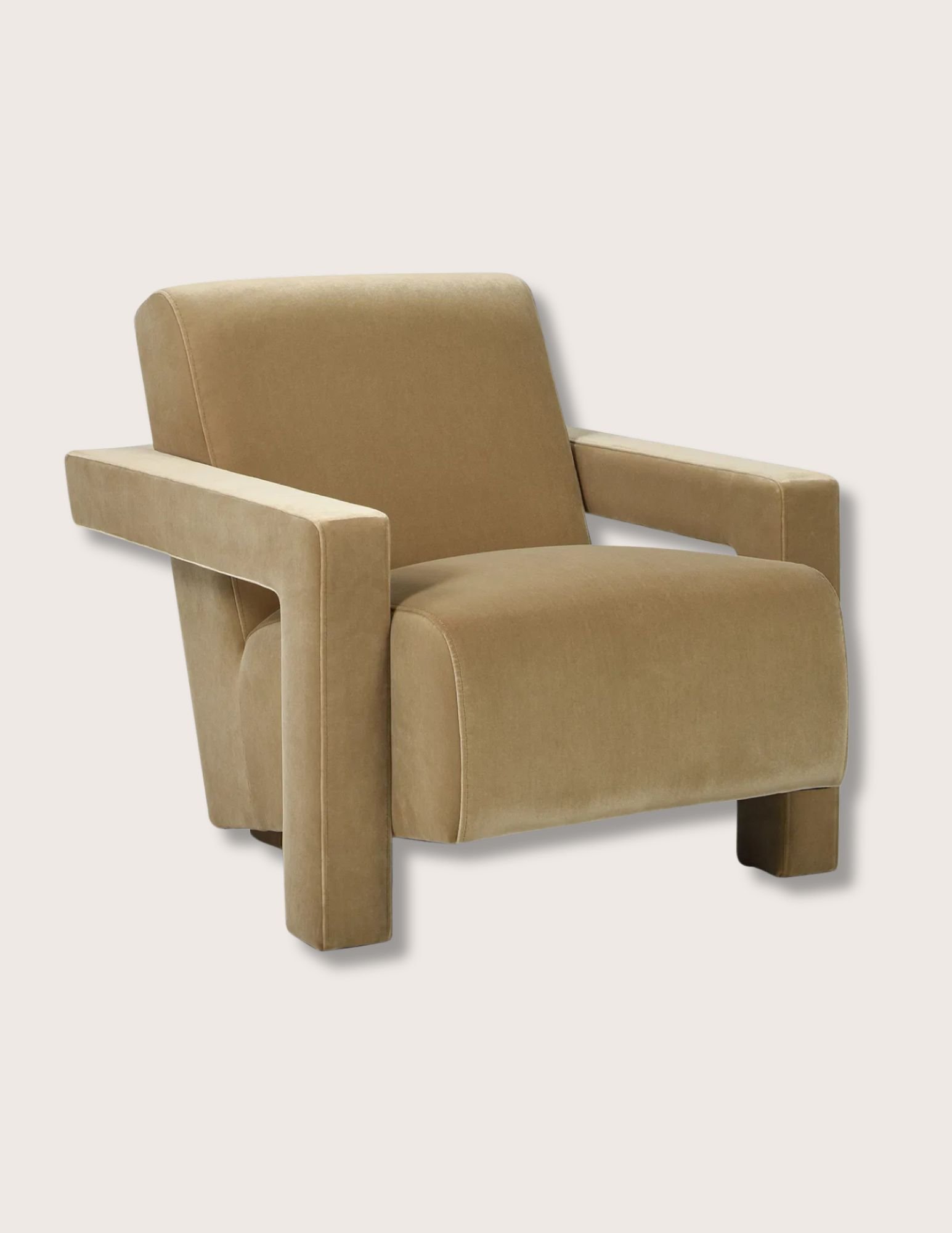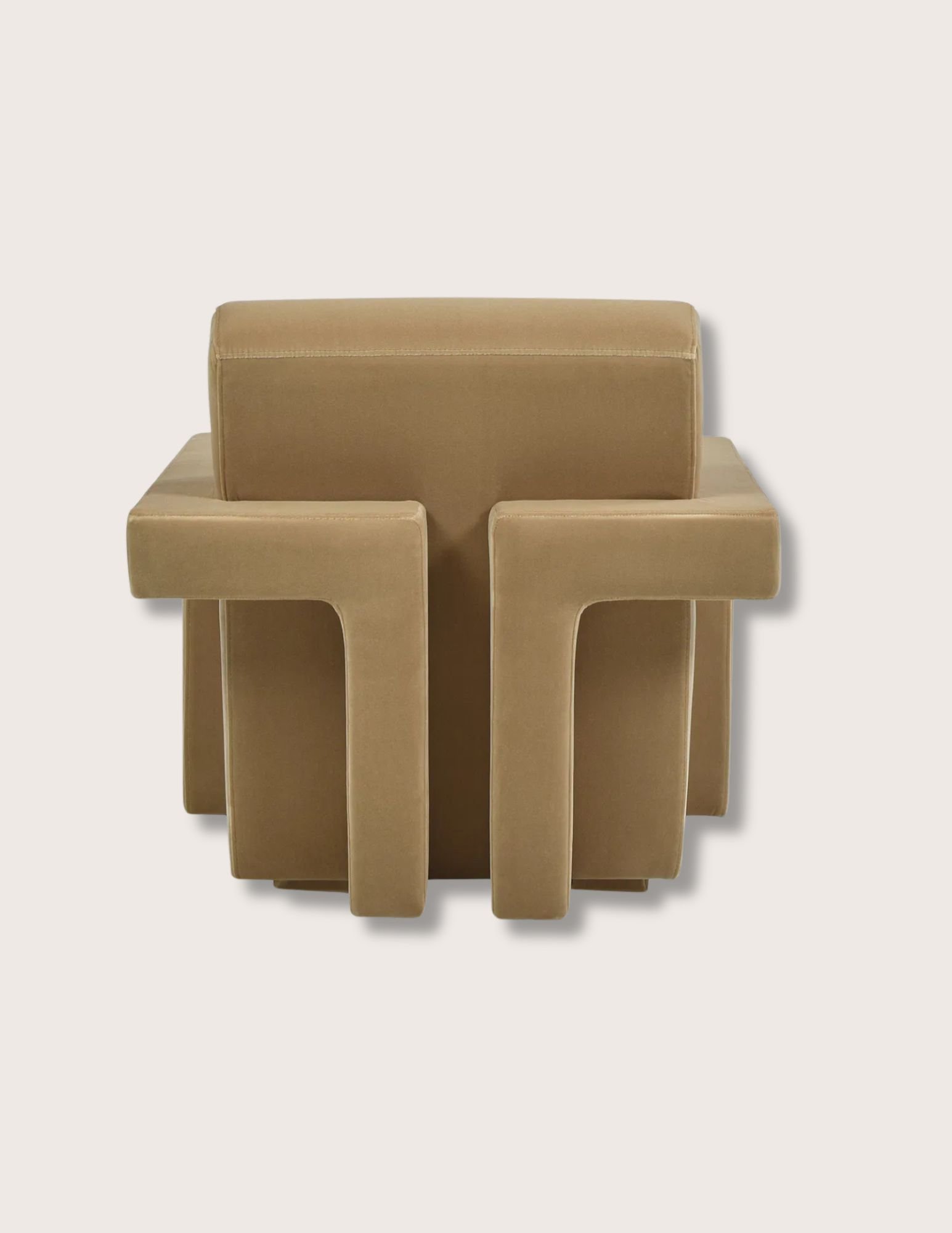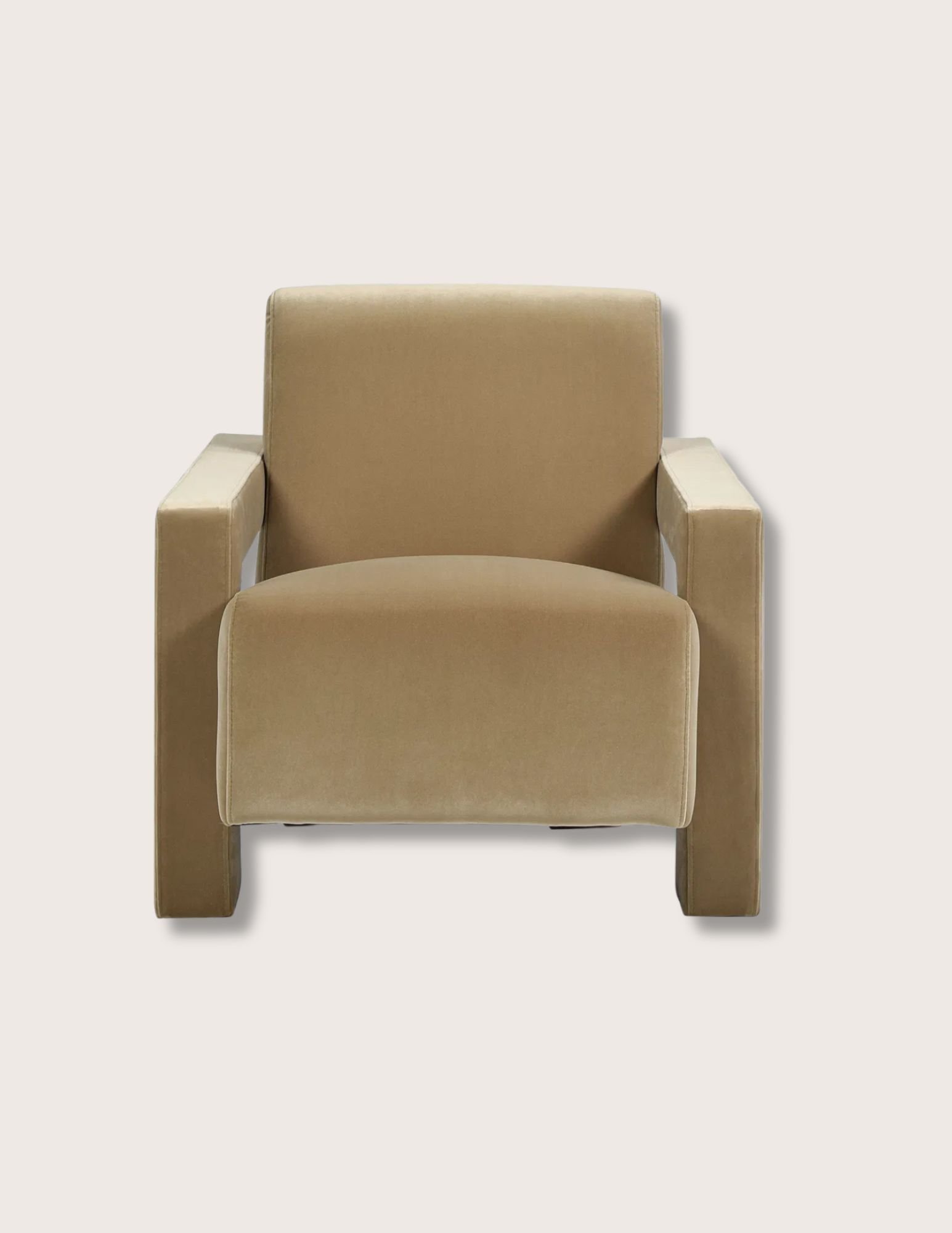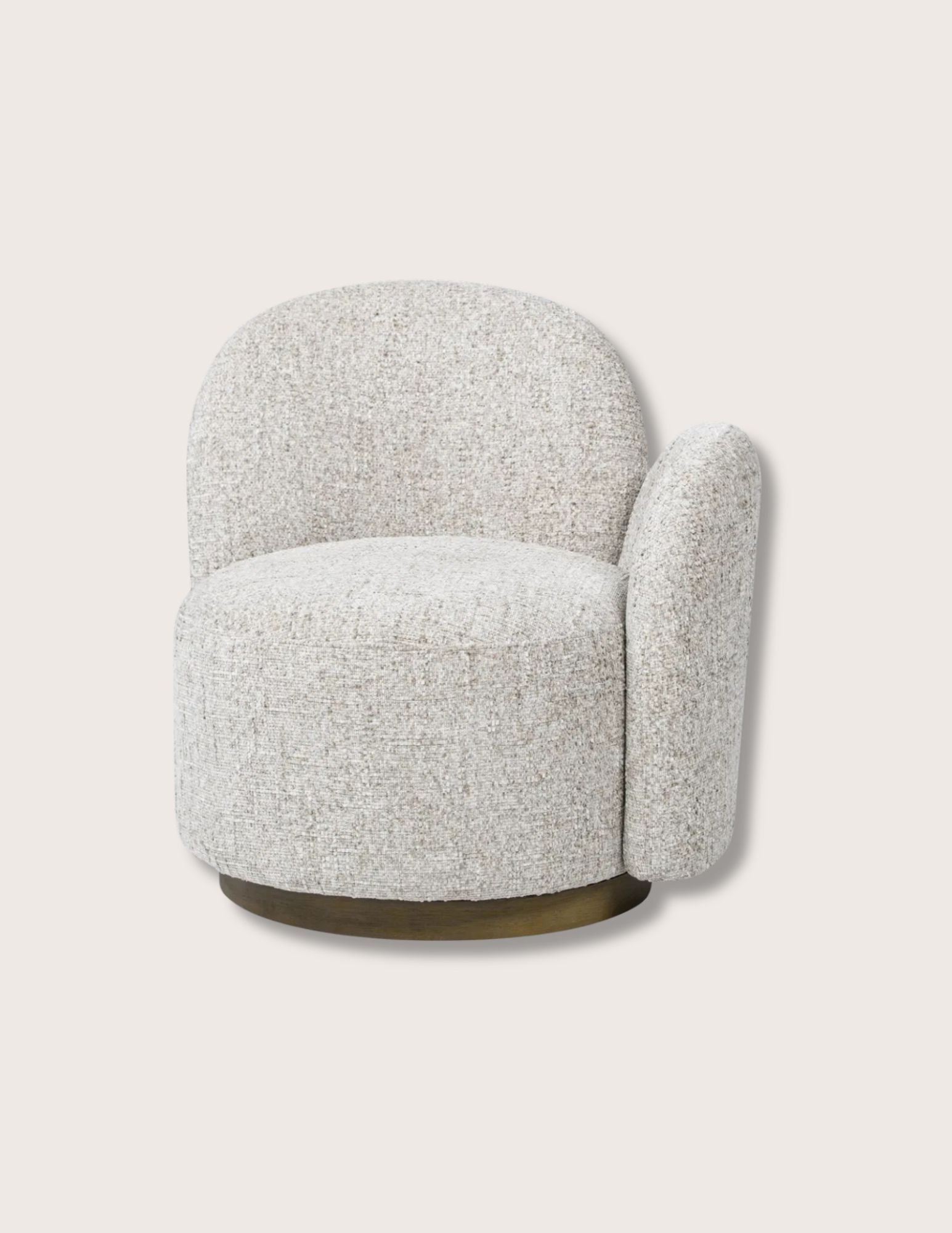 Image 1 of 4
Image 1 of 4

 Image 2 of 4
Image 2 of 4

 Image 3 of 4
Image 3 of 4

 Image 4 of 4
Image 4 of 4





Garrott Architectural Arm Chair
Details
Form and function. Comfort and style. Our Garrott Architectural Arm Chair is the perfect addition to any room in your home. Architectural square arms wrap around the back of the chair for a striking, modern silhouette. The performance velvet upholstery is durable and easy to maintain, and the sinuous spring inner seat construction provides a resilient foundation for the thick, cushioned seat, providing years of relaxation. Designed to accent any space, from living and dining rooms to dens, bedrooms and home offices this is the right chair for any room that can use a little extra seating, a lot of comfort, and a new level of style.
Editors' Note
This piece is named for James Homer Garrott, a remarkable modernist architect of the mid-century period, responsible for the design of more than 200 buildings over the course of his career. Born in Montgomery, Alabama in 1897, Garrott’s family moved to Los Angeles in 1903. His father, James Henry Garrott, had been a builder in Alabama, having worked on several buildings at the Tuskegee Institute. It was from him that the younger James would gain his early design training and interest in the world of built spaces. Following in his father's footsteps, Garrott went to work for George P. Telling, a Pasadena architect, and then for the Cavagliere Construction Company several years after graduating from Los Angeles Polytechnic High School in 1917. After years of experience, in 1928, the self-taught Garrott sat for the the California State Architect Exam with the State Board of Architectural Examiners, becoming California's second licensed Black architect after Paul R. Willams, a mentor with whom Garrott likely worked during the 1920s. Afterwards, Garrott opened his own office and began taking commissions. His early projects mostly consisted of renovations and small houses, with a focus on the popular Period Revival styles of the time. In the same year as his licensing, however, Garrott received an important early commission as co-designer of the headquarters of Golden State Mutual Life Insurance, once the largest Black-owned insurance company in the United States. Garrott shared his duties with another African American, Louis M. Blodgett, who oversaw construction. In addition to his work in development and construction, Blodgett was a founding board member — and later president — of the Liberty Savings and Loan Association, a Black-owned lending institution that created homeownership opportunities for Black families within Los Angeles' discriminatory lending and housing industries. After the project, Garrott elected to further his education, studying architecture at the University of Southern California from 1930 to 1934. In 1939 he began an informal partnership with Jewish-American architect Gregory Ain, a native Angeleno, known for his advocacy of the progressive aesthetics of the modernist style and the equally progressive social and political perspectives he felt underlied them. The two shared office space in the Granada Building in Westlake beginning in 1940 before building an office space together in Silver Lake in 1950. In between, in early 1940, Garrott designed two split level homes in Silver Lake for himself and for close friend, Loren Miller, a Black Civil Rights attorney — and later judge — who helped end the use of race covenants in California housing deeds. And in 1946, Garrott was admitted to the prestigious American Institute of Architects (AIA). Again, the second African American to achieve this distinction, following Paul R. Williams, Garrott's application for entry was jointly sponsored by Williams and Ain. A civil rights activist himself and member of the NAACP and the Urban League, Garrott also belonged to a progressively-minded group of designers which included architects Garrett Eckbo and Richard Neutra, and architectural photographer Julius Shulman. Fittingly, Garrott always maintained that of his many projects, he was proudest of those that most directly served the community. He is credited with the design of four housing projects, three civic centers, and more than twenty churches in addition to numerous libraries, schools, and medical buildings and hundreds of single-family homes. James Homer Garrott passed away in 1991.
Details
Form and function. Comfort and style. Our Garrott Architectural Arm Chair is the perfect addition to any room in your home. Architectural square arms wrap around the back of the chair for a striking, modern silhouette. The performance velvet upholstery is durable and easy to maintain, and the sinuous spring inner seat construction provides a resilient foundation for the thick, cushioned seat, providing years of relaxation. Designed to accent any space, from living and dining rooms to dens, bedrooms and home offices this is the right chair for any room that can use a little extra seating, a lot of comfort, and a new level of style.
Editors' Note
This piece is named for James Homer Garrott, a remarkable modernist architect of the mid-century period, responsible for the design of more than 200 buildings over the course of his career. Born in Montgomery, Alabama in 1897, Garrott’s family moved to Los Angeles in 1903. His father, James Henry Garrott, had been a builder in Alabama, having worked on several buildings at the Tuskegee Institute. It was from him that the younger James would gain his early design training and interest in the world of built spaces. Following in his father's footsteps, Garrott went to work for George P. Telling, a Pasadena architect, and then for the Cavagliere Construction Company several years after graduating from Los Angeles Polytechnic High School in 1917. After years of experience, in 1928, the self-taught Garrott sat for the the California State Architect Exam with the State Board of Architectural Examiners, becoming California's second licensed Black architect after Paul R. Willams, a mentor with whom Garrott likely worked during the 1920s. Afterwards, Garrott opened his own office and began taking commissions. His early projects mostly consisted of renovations and small houses, with a focus on the popular Period Revival styles of the time. In the same year as his licensing, however, Garrott received an important early commission as co-designer of the headquarters of Golden State Mutual Life Insurance, once the largest Black-owned insurance company in the United States. Garrott shared his duties with another African American, Louis M. Blodgett, who oversaw construction. In addition to his work in development and construction, Blodgett was a founding board member — and later president — of the Liberty Savings and Loan Association, a Black-owned lending institution that created homeownership opportunities for Black families within Los Angeles' discriminatory lending and housing industries. After the project, Garrott elected to further his education, studying architecture at the University of Southern California from 1930 to 1934. In 1939 he began an informal partnership with Jewish-American architect Gregory Ain, a native Angeleno, known for his advocacy of the progressive aesthetics of the modernist style and the equally progressive social and political perspectives he felt underlied them. The two shared office space in the Granada Building in Westlake beginning in 1940 before building an office space together in Silver Lake in 1950. In between, in early 1940, Garrott designed two split level homes in Silver Lake for himself and for close friend, Loren Miller, a Black Civil Rights attorney — and later judge — who helped end the use of race covenants in California housing deeds. And in 1946, Garrott was admitted to the prestigious American Institute of Architects (AIA). Again, the second African American to achieve this distinction, following Paul R. Williams, Garrott's application for entry was jointly sponsored by Williams and Ain. A civil rights activist himself and member of the NAACP and the Urban League, Garrott also belonged to a progressively-minded group of designers which included architects Garrett Eckbo and Richard Neutra, and architectural photographer Julius Shulman. Fittingly, Garrott always maintained that of his many projects, he was proudest of those that most directly served the community. He is credited with the design of four housing projects, three civic centers, and more than twenty churches in addition to numerous libraries, schools, and medical buildings and hundreds of single-family homes. James Homer Garrott passed away in 1991.

Additional Details
Single velvet accent chair
Color: Beige
Material: Velvet, Foam
Dimensions: 28.5" x 35.5" x 28.5"
Weight: 55 lbs
No assembly required
Made to order
Ships within the continental US in 3-4 weeks



























